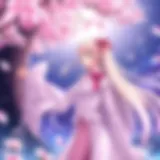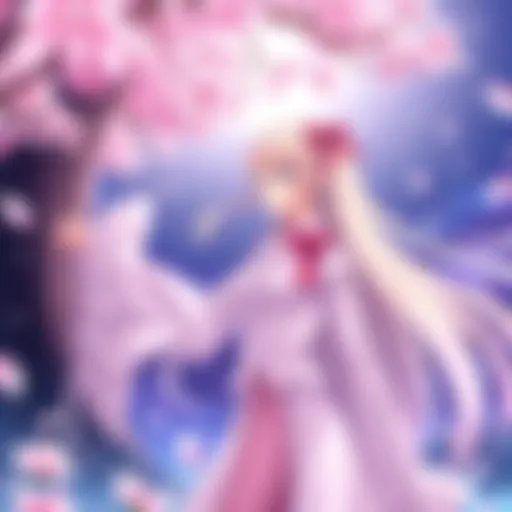Exploring Bungou Stray Dogs: An In-Depth Analysis


Intro
Bungou Stray Dogs is not merely a manga series; it is a layered tapestry woven from elements of literature, philosophy, and the supernatural. This analysis seeks to peel back these layers, providing insights into the series’ profound narrative complexity and character dynamics.
The blend of real historical literary figures with the unique immersive qualities of supernatural abilities presents a distinctive narrative approach. Readers journey through a fantastical version of Yokohama, where famous authors wield powers that reflect their literary legacy. This intersection of fiction and history invites not just entertainment, but deep contemplation on the identity of these figures and their relevance in contemporary society.
With a focus on character development, thematic exploration, and artistic style, this article aims to serve both new readers who are just stepping into the world of Bungou Stray Dogs and long-time followers who want a deeper understanding of its implications and artistry.
In the following sections, we will dissect the series’ core elements systematically, offering a comprehensive guide to its unique impact within the expansive manga universe.
Preamble to Bungou Stray Dogs
The introduction to Bungou Stray Dogs serves as a crucial entry point for both enthusiasts and newcomers to the series. Understanding the foundation of this story sets the stage for exploring its complex narrative and rich character development. This section not only introduces the main themes but also highlights how the series combines literary allusions with supernatural elements, making it distinct in the manga landscape.
In this article, we will explore significant aspects of the series that contribute to its popularity and analytical depth. Like any multi-layered narrative, Bungou Stray Dogs has many facets that merit closer examination. The unique pairing of historical literary figures with urban fantasy and action tropes offers a vivid backdrop that shapes character motivations and narratives. Furthermore, the themes of identity, conflict, and morality elevate its storytelling beyond mere entertainment.
Overview of the Series
Bungou Stray Dogs, created by Kafka Asagiri and illustrated by Sango Harukawa, is a manga series that debuted in 2012. The series fuses the adventures of supernatural detectives with real-life authors and poets who possess extraordinary powers mirroring their literary works. This ingenious concept enables a creative exploration of the character's historical contexts while giving readers engaging action-packed sequences.
The narrative spotlights a young orphan, Atsushi Nakajima, who discovers his ability to transform into a tiger. This ability draws him into the Armed Detective Agency, where he encounters various characters based on famous literary figures, such as Osamu Dazai and Ryunosuke Akutagawa. Each character not only enriches the story's complexity but also serves as a reflective lens for their respective authors' philosophies and struggles.
With its blend of mystery, comedy, and drama, Bungou Stray Dogs appeals widely to fans of different genres. It encourages readers to delve deeper into the philosophical and psychological themes presented, urging them to reflect on their own experiences and beliefs.
Historical Context and Release
Bungou Stray Dogs emerged during a significant time in the manga and anime industry, where series were increasingly intertwining modern themes with historical narratives. Released by Kafka Asagiri initially in Young Ace magazine, the series rapidly garnered attention for its unique premise and intricate storytelling approach.
The influence of Japanese literature and its storied history is palpable throughout the narrative. Asagiri’s choice to feature dead literary figures in lively roles sparks interest in classical texts, granting them relevance to contemporary audiences. This invites greater exploration into the works of authors like Dazai and Akutagawa, whose own lives were fraught with struggles that parallel those of the characters.
In summary, the introduction and historical context of Bungou Stray Dogs are pivotal in appreciating its significance and depth within the broader narrative of manga. The series has not only captivated readers with its artistry and humor but also serves as an intellectual engagement with literary heritage.
Narrative Structure
Understanding the narrative structure in Bungou Stray Dogs is essential for appreciating how its story unfolds. The intricacies of storytelling in this series hinge on its unique blending of literary figures and supernatural abilities. This approach allows for a rich exploration of themes such as identity, existential struggles, and the essence of creativity. Analyzing the narrative structure reveals how these dimensions contribute to the series' impact, offering readers a layered experience that invites both casual enjoyment and deeper academic inquiry.
Plot Summary
Bungou Stray Dogs centers on Atsushi Nakajima, a young orphan who discovers his ability to transform into a tiger. His journey begins when he encounters members of the Armed Detective Agency, a group dedicated to solving supernatural cases. As Atsushi becomes embroiled in conflicts with the Port Mafia and other entities well-versed in the supernatural, the plot unfolds through various arcs that intertwine character motivations and broader societal themes.
Key events are orchestrated to highlight not just action but also the emotional and psychological stakes involved. Important plot elements include:
- Atsushi's growth from a lost soul to a confident individual.
- Character conflicts, such as those between the Armed Detective Agency and the Port Mafia.
- The exploration of moral ambiguities within each faction, forcing characters to make tough choices.
Overall, the plot intricately weaves together the pasts and futures of each character, enriching the reading experience.
Character Arcs
The character arcs in Bungou Stray Dogs play a pivotal role in illustrating the development of both individual characters and their relationships with one another. Each character is crafted with unique backstories and motivations that resonate with the overarching themes of the series.
- Atsushi Nakajima: His evolution throughout the series is profound. Initially insecure and devoid of purpose, he ultimately learns to embrace his identity and value his abilities. His experiences reflect the journey of self-discovery.
- Osamu Dazai: As a complex character often shrouded in mystery, he struggles with his past and his desire for death. His arc challenges typical conventions about heroism. Dazai's interactions with Atsushi reveal layers of hope and despair.
- Ryunosuke Akutagawa: His character represents a deeper exploration of power and its consequences. Akutagawa's evolution from a ruthless antagonist to a more sympathetic figure showcases a journey marked by conflict and understanding.
The depth of their character arcs is not only crucial for personal development but also serves to draw attention to the themes of the series, such as redemption and the search for meaning.
"Bungou Stray Dogs intricately merges character evolution with thematic depth, inviting readers to reflect on their own identities and struggles."
Through careful construction of these arcs, Bungou Stray Dogs ultimately invites a more profound engagement with each character's journey in the broader context of the story.
Character Analysis
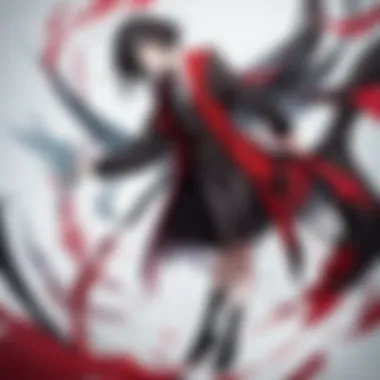

The section on character analysis is essential to understanding Bungou Stray Dogs. Characters in this series are not just vehicles of the narrative; they embody themes, drive the plot, and reflect the complexities of human nature and creativity. Each character is crafted with depth, showcasing their motivations, conflicts, and evolution throughout the series. This analysis goes beyond surface-level traits, exploring the layers that make each character significant within a larger literary context.
Protagonists: Atsushi Nakajima
Atsushi Nakajima is at the heart of Bungou Stray Dogs. Initially introduced as a homeless orphan, he quickly becomes a symbol of resilience. Nakajima possesses the ability to transform into a white tiger, a power that represents both his struggle and his strength. Throughout the series, he grapples with self-doubt and search for identity. His journey from isolation to belonging within the Armed Detective Agency is compelling. It highlights how external perceptions can shape an individual’s self-worth. Atsushi's character arc exemplifies the blending of personal growth and supernatural elements, making him a relatable foundation for the narrative.
Key Characters: Dazai, Akutagawa, and others
Dazai Osamu is a pivotal figure, known for his dual nature. He is charming yet deeply troubled by his past, embodying the constant conflict many characters face. His connections with Atsushi guide the latter’s development, blending mentorship with elements of tragedy. Dazai's ability manipulation is not just a plot tool; it reflects his philosophical musings about life and death, representing his internal struggles.
Akutagawa Ryunosuke serves as a foil to Atsushi and Dazai, representing a darker path. His power, Rashomon, allows him to manipulate shadow-like creatures. Akutagawa's character is a manifestation of rage and desire for validation, drawing attention to the motivations that fuel one’s actions. His growth is significant, creating tension and drama while showcasing a yearning for recognition.
Additionally, other key characters like Kunikida Doppo and Tanizaki Jun’ichirou contribute layers to the narrative.
- Kunikida emphasizes ideals against harsh reality, shaping his decisions with a utilitarian approach.
- Tanizaki, often overshadowed, presents an emotional depth and strategic mind that challenges typical character stereotypes.
These key figures enhance the story's richness, intertwining their arcs with thematic elements.
Character Interactions and Relationships
The dynamics between characters in Bungou Stray Dogs create a tapestry woven with varying themes of friendship, rivalry, and conflict. Interactions often reveal deeper insights into their personalities.
The relationship between Dazai and Atsushi illustrates how mentorship can vacillate between guidance and manipulation. Dazai challenges Atsushi to face his fears, driving him toward greater self-understanding. This relationship is marked by tension, underlining the complexities of human connections.
In contrast, the enmity between Akutagawa and Atsushi serves to highlight the struggle between opposing ideologies. Their confrontations are fiery, often revealing vulnerabilities masked as aggression.
"In the struggle for power and identity, relationships become the crucible that tempers character development."
Overall, character analysis in Bungou Stray Dogs is not merely a study of individuals; it is a comprehensive view of how their interactions reflect and shape intricate themes within the series.
Themes and Motifs
The exploration of themes and motifs in Bungou Stray Dogs reveals the series' depth and complexity. These elements serve as the backbone of the narrative and add to the richness of character development. Understanding these themes enhances the reader's appreciation of the plot and character interactions.
Literature and Identity
At the heart of Bungou Stray Dogs is the confluence of literature and identity. The characters are not just fictional creations; they embody the essence of the literary figures they represent. For example, Osamu Dazai's character mirrors the real-life author, whose struggles with depression and existential questions are woven into Dazai's narrative arc. This relationship invites readers to reflect on how one’s identity can be influenced by literary history.
The series delves into how literature shapes personal and collective identities. The characters navigate their abilities, purpose, and self-worth through the lens of their literary counterparts. It challenges the notion of identity as static, illustrating it as fluid and multi-faceted. This theme resonates with audiences, inviting them to explore their literary influences.
Struggles of Duality
The motif of duality is prevalent throughout Bungou Stray Dogs. Characters often face internal conflicts that embody the struggle between their extraordinary abilities and their human vulnerabilities. Such conflicts create a profound narrative that highlights the dual lives led by the characters.
Atsushi Nakajima epitomizes this theme, as he grapples with his were-tiger ability against his desire for acceptance and belonging. This dichotomy reflects a universal human experience—the tension between our strengths and weaknesses.
Moreover, the duality extends to the moral landscapes presented in the series. Characters are not simply heroes or villains; they exist in shades of gray. The fights against opposing forces symbolize broader societal struggles. How does one define good and evil in a world filled with ambiguity? The series encourages a dialogue around these moral complexities, making it relevant to readers keen on philosophical inquiries.
"Bungou Stray Dogs examines the blurred lines between heroism and villainy, reflecting the intricate nature of human existence."
In summary, the themes of literature and identity along with the struggles of duality not only propel the plot forward but also engage readers in deeper contemplation of their own lives and identities. As such, these motifs are vital for understanding the series' significance within the broader context of manga.
Art and Aesthetic
In Bungou Stray Dogs, the art and aesthetic aspect plays a crucial role in shaping the viewer’s experience. The visual elements are not just decorative; they enhance the narrative and deepen the understanding of characters and themes. The art style, character design, and overall visual presentation create an immersive world that complements the complex storytelling throughout the series. Furthermore, the visual style often reflects the psychological states of characters, thus adding another layer of meaning.
Art Style and Character Design
The art style of Bungou Stray Dogs is distinctive, characterized by its clean lines and detailed backgrounds. The artists employ various shading techniques to depict depth and emotion, often using contrasting colors to highlight significant moments. Each character is designed with unique traits that correspond with their personalities, historical significance, and supernatural abilities. For example, Dazai's elegantly disheveled look reflects his complex nature, blending charisma with a sense of melancholy.
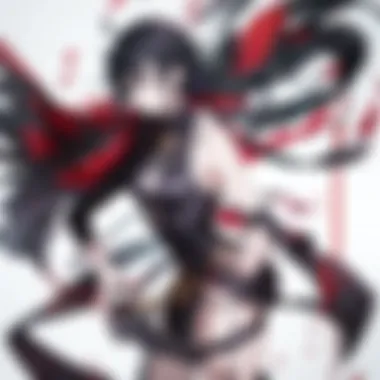

Moreover, character designs also include visual cues that hint at their literary counterparts. For instance, the attire and expressions are carefully crafted to resonate with the personalities depicted in their respective literary works. This attention to detail enhances the audience's appreciation of the characters, making them not only memorable but also relatable at times.
Visual Storytelling Techniques
The use of visual storytelling techniques in Bungou Stray Dogs is compelling and effective. The series utilizes panel layout and pacing meticulously to build tension and convey emotions without needing extensive dialogue. Action scenes, for instance, are often illustrated with dynamic angles and fluid movements that capture the urgency of the moment. This technique allows the reader to feel the intensity of each confrontation.
Additionally, symbolism is prevalent throughout the visual narrative. For example, motifs of nature or urban environments often symbolize the internal states of characters. The stark contrast between chaotic battle scenes and calmer, introspective moments can signify characters’ emotional struggles, thus engaging the viewer on a deeper level.
"Visual storytelling in Manga is not just about imagery; it’s a language of its own that conveys meaning beyond words."
In terms of composition, the strategic placement of characters and objects guides the viewer’s eye and enhances the storytelling. By showcasing interactions in close-ups or wide shots, the artist communicates relationships and emotional connections effectively. This harmonious relationship between art and narrative ensures that both elements work together to create a cohesive experience, making Bungou Stray Dogs stand out in the manga medium.
Through these artistic and aesthetic choices, the series not only entertains but also invites analysis, allowing readers to explore the psychological, existential, and cultural dimensions inherent in the narrative.
Cultural References
The cultural references embedded in Bungou Stray Dogs underscore its significance in the manga universe. This aspect not only enhances the storytelling but also creates a bridge between the readers and the literary past. The interrelation between characters and historical literary figures offers a layered understanding of identity, conflict, and artistry.
Historical Figures in the Narrative
Bungou Stray Dogs uniquely integrates real-life literary giants into its narrative, portraying them with reimagined abilities and personas. Authors such as Osamu Dazai and Ryunosuke Akutagawa are not just characters; they embody their literary legacies. Their powers often reflect their writings and themes. For instance, Dazai’s ability revolves around the concept of death, which aligns with his life's preoccupations and themes in his literature. This merging of history and fiction deepens the interaction with these figures, inviting readers to explore their real-world contributions through the lens of the narrative.
One can also see how these historical figures engage with each other within the series. The dynamics between them often mirror the rivalries, friendships, and debates that characterize the literary world.
Japanese Literary Context
The setting of Bungou Stray Dogs is rich with references to Japanese literature. The series articulates the struggles faced by writers and the impact of their work on society. It’s insightful to note how the characters, embodying real authors, reflect the contexts in which those authors lived and wrote. The themes of despair, existentialism, and surrealism are prevalent in both their works and the storyline of the manga.
Furthermore, the narrative delves into the concept of identity, a recurrent theme in Japanese literature. Characters often grapple with their selves, paralleling the existential themes found in many famous Japanese literary works. This context elevates the series from mere entertainment to a contemplative exploration of art and creativity.
"By weaving these elements together, Bungou Stray Dogs not only celebrates literary history but also challenges its audience to rethink the legacy of these figures in contemporary society."
In summary, the cultural references in Bungou Stray Dogs enrich the story, offering depth and promoting an appreciation of literary history. This amalgamation of real figures with fictional narratives enables readers to engage with the historical context and themes on multiple levels.
Thematic Development Across Chapters
The thematic development across the chapters of Bungou Stray Dogs is crucial for understanding its depth and complexity. This manga intricately weaves character evolution and thematic motifs that resonate with the audience. It brings forth a myriad of interpretations that enhance the overall storytelling experience and invite readers to explore the psychologial dimensions of its characters. By analyzing how themes change and develop, one gains insight into the narrative's progression and the broader social and philosophical commentary embedded within the series.
Evolution of Character Themes
In Bungou Stray Dogs, character themes are not static; they evolve significantly as the story progresses. For instance, Atsushi Nakajima starts as a dispirited youth grappling with his identity and purpose. As he interacts with the members of the Armed Detective Agency, his character evolves from one engulfed in self-doubt to a strong and self-assured individual. This transformation underscores the series' exploration of personal growth and the impact of relationships on one’s identity.
The characters’ themes often reflect broader societal issues. The internal struggles faced by Osamu Dazai, which involve existential crises and the contemplation of suicide, highlight themes of mental health. As the narrative unfolds, his interactions with other characters reveal layers of complexity, showcasing his desire to both connect with others and his simultaneous retreat into despair.
Moreover, Ryunosuke Akutagawa, with his intense ambition and desire to prove himself, juxtaposes nicely against Atsushi. Akutagawa’s evolution illustrates the dark side of ambition and the cost of power and recognition. The contrasting journeys of these characters illuminate the manga’s persistent inquiry into the nature of identity and the social fabric that binds and isolates individuals.
Recurring Symbols and Imagery
Symbols and imagery play an integral role in strengthening the themes presented in Bungou Stray Dogs. The repeated motifs serve to reinforce the core messages and incite reflection among readers. One prominent symbol is the "Ability"—a unique manifestation of a character's literary persona. Each character’s ability symbolically aligns with their respective literary figures, adding depth to their arcs and connecting their fictional reality to historical context.
For example, the ability of Dazai to nullify others' powers speaks to his desire to eliminate suffering but also reflects his own struggle against his demons. Similarly, Akutagawa's "Rashomon" highlights themes of violence and survival, citing the brutal nature of his character and the chaotic world he inhabits.
Additionally, the recurring image of the moon appears throughout the series, often serving as a backdrop during pivotal moments. This imagery evokes the idea of duality—the light and darkness within characters and their decisions. It encapsulates the series' exploration of moral ambiguity, presenting the reality that individuals are often a fusion of both good and evil.
In summary, the thematic development in Bungou Stray Dogs is a testament to its layered narrative. The evolution of character themes and the utilization of symbols and imagery invite thoughtful engagement, encouraging readers to reflect on personal identity, societal pressures, and the intricate balance between light and dark within the human experience.
"The narrative challenges the reader to confront their beliefs about selfhood and morality through its characters' journeys."
Understanding these themes not only enriches the reading experience but also deepens the appreciation for the philosophical underpinnings rooted in the manga's narrative structure.
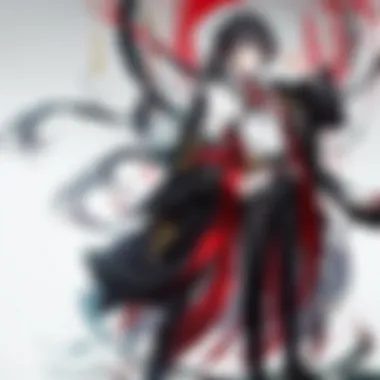

Impact and Reception
The impact and reception of Bungou Stray Dogs speak volumes about its place not only in the manga world but also in contemporary culture. This section delves into individual facets of how the series has been recognized and received by its audience and critics. Understanding these elements enhances appreciation for the series and gives insight into its lasting appeal. It reflects how a unique blend of historical characters, complex narratives, and rich themes resonate deeply with readers. This analysis targets anime and manga enthusiasts who want to explore these significant points.
Recognition and Awards
Bungou Stray Dogs has made a significant impression on both critics and fans. Its accolades include several nominations and awards that highlight its exceptional storytelling and art style. Notably, the series was nominated for the Eisner Award in the Best U.S. Edition of International Material. Another noteworthy recognition is its victory at the Tokyo Anime Award Festival, where it earned accolades in multiple categories. These awards showcase the series' artistic merit and help solidify its reputation in a competitive landscape.
Fans often cite the engaging narrative and depth of character as reasons for the series' acclaim. This critical acknowledgment has helped cement Bungou Stray Dogs as a prominent name among modern manga, making it not just popular, but respected.
Fanbase and Community Reception
The fanbase for Bungou Stray Dogs is a vibrant and energetic community that contributes to its longevity. Social media platforms like Reddit and Facebook serve as hubs for discussion, fan art, and theories. Fans frequently share their thoughts on character development and thematic elements. This interaction fosters a strong sense of belonging among fans.
"The emotional depth in Bungou Stray Dogs creates connections that go beyond the pages."
Moreover, the anime adaptation has brought even more viewers into the fold. With its stunning animation and voice performances, it has attracted a wider audience than those who read the manga alone. This cross-platform appeal strengthens community ties and allows fans to engage in diverse discussions.
In addition, organized events like panels at anime conventions provide fans a space to gather and celebrate their favorite series. Discussions surrounding the layers of historical context and literary references create a rich environment for insight.
Through these channels, Bungou Stray Dogs is continually dissected and appreciated, allowing the series to thrive well beyond its initial release.
Adaptations and Spin-offs
Adaptations and spin-offs play a crucial role in the longevity and popularity of a series like Bungou Stray Dogs. They expand the universe and provide various ways for fans to engage with the story and characters. The adaptations can deepen the narrative experience by offering different perspectives or highlighting specific elements of the main story. Moreover, they can attract new audiences who might not be familiar with the original manga.
This section will cover two essential components of Bungou Stray Dogs: its anime adaptation and the manga's spin-offs and side stories. Each of these provides a unique lens through which to view the original work.
Anime Adaptation Insights
The anime adaptation of Bungou Stray Dogs first premiered in April 2016. Produced by Studio Bones, it aimed to capture the essence of the manga while appealing to animation lovers. The anime has been well-received for its animation quality, voice acting, and fidelity to the source material. It does a commendable job of translating the complexities of the characters and the intricate plot into a visual format.
One significant advantage of the anime is its ability to reach a wider audience. Many viewers are introduced to the world of Bungou Stray Dogs through the anime rather than the manga. The dynamic visuals and soundtrack contribute to a more immersive experience.
However, adaptations often face challenges. Some fans feel that certain character arcs get less focus in the anime. Additionally, the pacing can vary, leading to some plot points being rushed or inadequately explored compared to the manga. Still, the success of the anime has brought renewed interest in the original manga and prompted discussions among fans.
The anime adaptation serves not only as a retelling of the story but also as a bridge connecting new audiences to the source material.
Manga Spin-offs and Side Stories
Manga spin-offs and side stories represent the richness of Bungou Stray Dogs' universe. These additional narratives allow for exploration beyond the main plot. They delve into character backgrounds, unexplored incidents, or alternate realities that complement the original storyline.
For instance, the side stories often spotlight less prominent characters, giving readers a broader understanding of their motivations and relationships with others in the narrative. This adds a new dimension to the overall lore of the series, encouraging fans to engage with it further.
Some notable spin-offs include "Bungou Stray Dogs: Beast" and "Bungou Stray Dogs: Dead Apple," which introduce fresh elements while maintaining the core themes of the series. These works often attract dedicated fandoms themselves, creating mini-communities that enhance the series' collective impact.
In summary, adaptations and spin-offs of Bungou Stray Dogs are vital for both preserving and expanding the storytelling universe. They provide fans and newcomers alike with diverse ways to enjoy the tale, enrich character development, and foster community discussions.
Closure
The conclusion of this analysis serves to distill the key insights from the exploration of Bungou Stray Dogs. It emphasizes the series' nuanced blend of literary figures and supernatural elements. This unique approach not only sets the series apart within the anime and manga genres but also invites readers to engage with the characters and the narrative on multiple levels.
Final Thoughts on Bungou Stray Dogs
Bungou Stray Dogs is more than a mere narrative; it is a rich tapestry of literary and historical references woven into an engaging storyline. The characters are not simply fictional constructs; they are literary embodiments of real authors, each bringing their own complexities and conflicts to the forefront. This meta-narrative layer enriches the experience, allowing for exploration of themes such as identity and the nature of creativity.
The character development throughout the series holds significant importance. Readers witness growth and transformation, making the journeys of characters like Atsushi Nakajima and Osamu Dazai relatable and impactful. Their struggles are reflective of broader human experiences, encapsulating the essence of existential contemplation.
Future Prospects for the Series
Looking ahead, the future of Bungou Stray Dogs appears promising. The popularity of the series has stimulated discussions around potential new arcs and adaptations. There is a palpable interest in exploring untold stories of secondary characters and diving deeper into their backgrounds.
Moreover, with the ongoing evolution of anime and manga industries, Bungou Stray Dogs could see further adaptations in various media formats, such as live-action projects or video games. These expansions would not only attract new fans but also provide existing readers new contexts through which to engage with the material.
In addition, as the series continues, scholars and enthusiasts alike may delve deeper into its thematic elements and character studies, ensuring that Bungou Stray Dogs retains its significance and relevance. By continuously evolving while honoring its roots, it can preserve a lasting impact within the realm of contemporary storytelling.


